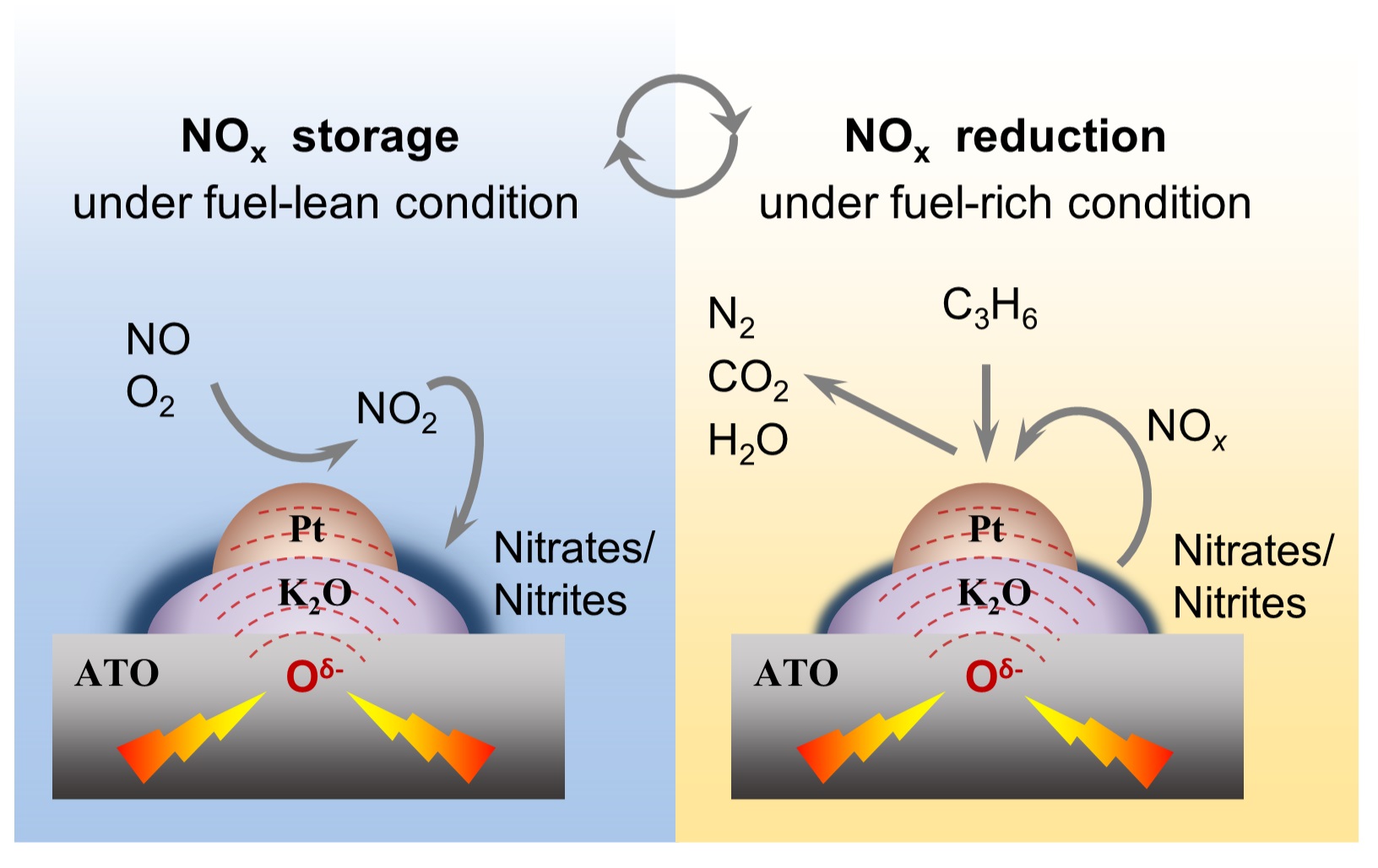Prof. ZHANG Jian’s group at the Ningbo Institute of Materials Technology and Engineering (NIMTE) of Chinese Academy of Sciences (CAS), cooperating with Prof. ZHANG Zhaoliang’s group from University of Jinan, has developed a novel electrification strategy to improve NOx removal performance at low temperatures. The study was published in Environmental Science & Technology.
NOx storage–reduction (NSR) is a promising approach for controlling NOx emission from diesel vehicles, thus to address the growing global energy crisis and climate change.
However, due to the improvement of engine technologies and frequent idling in traffic, the exhaust temperatures usually below 250 ℃, which is too low for catalytic NOx conversion to occur.
To address this issue, researches at NIMTE develop a novel electrified NSR strategy. Pt and K co-supported antimony-doped tin oxides (Pt-K/ATO) serve as conductive catalysts. With C3H6 as a reductant, a low input power (0.5?4 W) is applied to the catalyst to trigger NSR reactions.
By virtue of this strategy, the ignition temperature for 10% NOx conversion decreased to 165 °C, which is nearly 100 °C lower than that of the traditional thermal counterpart.
To optimize the power configuration, the power in the fuel-lean period was reduced, leading to a 23% increase in the maximum energy efficiency.
In addition, electrically driven release of lattice oxygen from catalysts is revealed to play crucial roles in NSR reactions, including promoting NO oxidation for NOx adsorption, O2 evolution for NOx desorption, as well as C3H6 activation for NOx reduction, thus greatly improving NSR performance.
As reported in the previous work of the research group, this effect has also been applied to the catalytic soot combustion, showing its certain universality.
This electrification strategy may shed light on hybrid vehicle design, especially on electronic control unit development, as the electric power input can be adjusted in real time to reduce exhaust pollutants.
The study was supported by the by Zhejiang Provincial Natural Science Foundation of China (Nos. LY23B070002, LQ23E080004), Ningbo Municipal Natural Science Foundation of China (No. 2023J046), Postdoctoral Science Foundation of China (Nos. 2022M720152, 2022TQ0350), National Natural Science Foundation of China (Nos. 22276070, 22076062, 22376078) and Taishan Scholar Program of Shandong (No. tstp20230628).

Fig. The procedure of electrified NOx storage–reduction (Image by NIMTE)
Contact
MEI Xueyi
Ningbo Institute of Materials Technology and Engineering
E-mail: meixueyi@nimte.ac.cn

